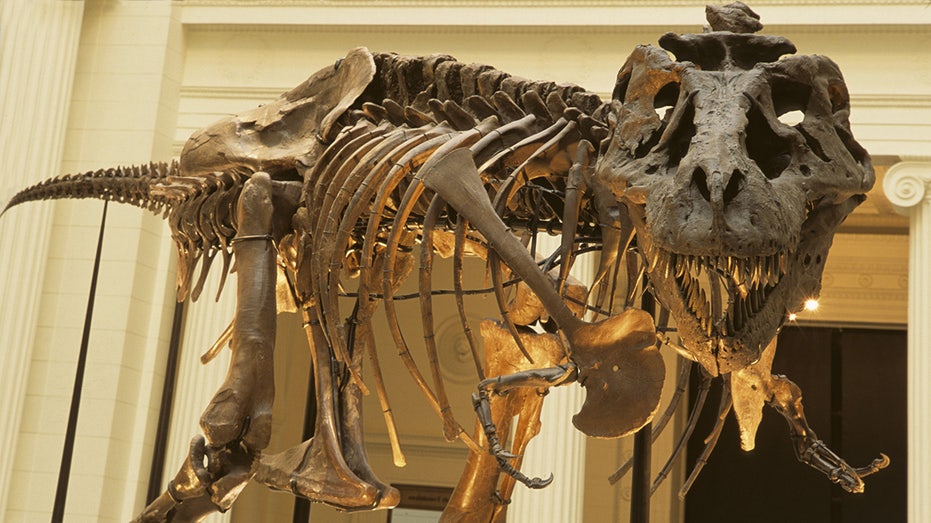What we thought we knew about T rex was wrong, researchers say in new study
A new fossil study is casting doubt on long-held beliefs that smaller versions of the Tyrannosaurs rex were adolescent versions of their famous adult counterparts.

An old dinosaur debate gained new traction after a new study's findings suggesting that miniature versions of the famed Tyrannosaurus rex may actually be a distinct species.
Researchers from the University of Bath and University of Chicago took a new look at fossils of small T. rexes and concluded that what was once thought to be young versions of the well-known tyrannosaurs, is more likely its own similar, but separate species.
The study, which was published in the journal of Fossil Studies, researched the growth rings of young T. rex fossils and found evidence that bone growth rates were slowing and indicated that the Nanotyrannus versions of the famous dinosaurs were likely almost full size.
DINOSAURS MAY HAVE BEEN KILLED OFF BY 'APOCALYPTIC DUST PLUME': STUDY
"If they were young T. rex they should be growing like crazy, putting on hundreds of kilograms a year, but we're not seeing that," Dr. Nick Longrich, co-author of the study, said in a report published by New Atlas. "We tried modeling the data in a lot of different ways and we kept getting low growth rates."
The results contradict a 2020 study by researchers at Oklahoma State University, who concluded that at the time of the death, the small T. rexes were likely only 13 to 15 years old and had not yet reached their full growth potential.
However, the new study modeled the potential growth rate of the smaller T. rexes bones and estimated that they would have grown to a maximum of between 1,984 and 3,307 pounds, only about 15% of the size of an adult T. rex.
The researchers also found that Nanotyrannus fossils had over 150 characteristics that were distinct from their Tyrannosaurus counterparts, including narrower snouts and longer arms.
"The arms are actually longer than those of T. rex," Longrich said. "Even the biggest T. rex, has shorter arms and smaller claws than in these little Nanotyrannus. This was an animal where the arms were actually pretty formidable weapons. It's really just a completely different animal – small, fast, agile. T. rex relied on size and strength, but this animal relied on speed."
The researchers also contend that there has been a lack of discovers of fossils that share features from both the Nanotyrannus and Tyrannosaurus, which should begin to blend features as the smaller version of the famous dinosaur aged if they were the same species. Instead, the researchers claim that an old fossil once believed to be a Nanotyrannus was found to be that of a young Tyrannosaurus upon reaminations of its skull measurements, while also having similar features to those of the larger species.
Nevertheless, the new research has not convinced all scientists that the smaller fossils belong to a distinct species.
"I have no problem with Nanotyrannus being a real thing if science shows that," Holly Woodward, the author of the 2020 Oklahoma State study, said in an interview with the New Scientist. "I’m not convinced that their interpretation is more accurate than ours."
However, others welcomed the new perspective, with College of Charleston scientist and self-described "dino-maniac" Scott Persons telling the New Scientist the results should serve to broaden the debate.
"This new paper will not resolve the debate, but I am optimistic that this paper will shake things up a great deal," Persons said.
What's Your Reaction?
















